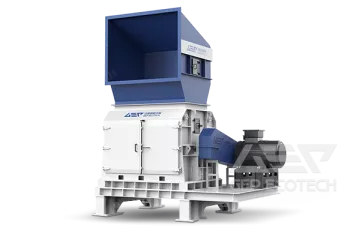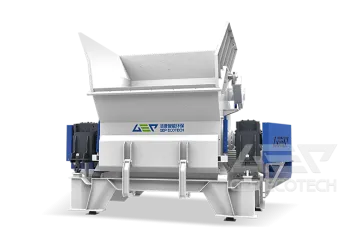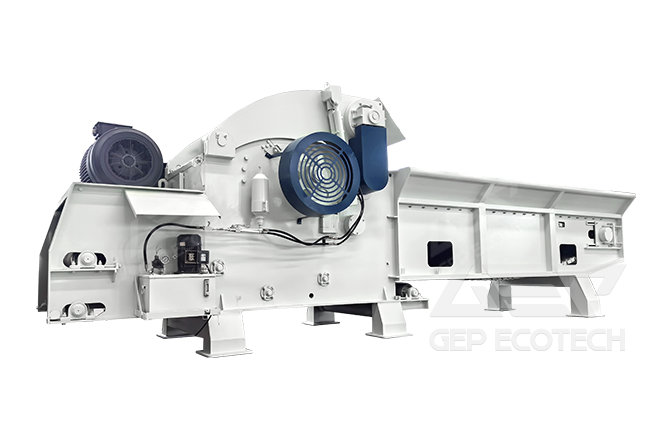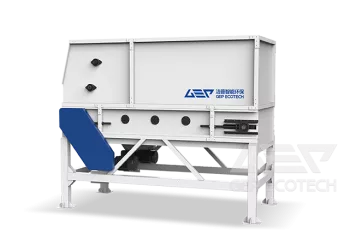Fiberglass (also known as FRP) is a composite material made of fiberglass and epoxy or polyester resins, among others. Because of its light, strong, corrosion resistance and other characteristics, it is widely used in shipbuilding, chemical industry, construction and other fields. At the same time, FRP is a kind of recyclable material, which can be recycled to reduce waste and environmental pollution.
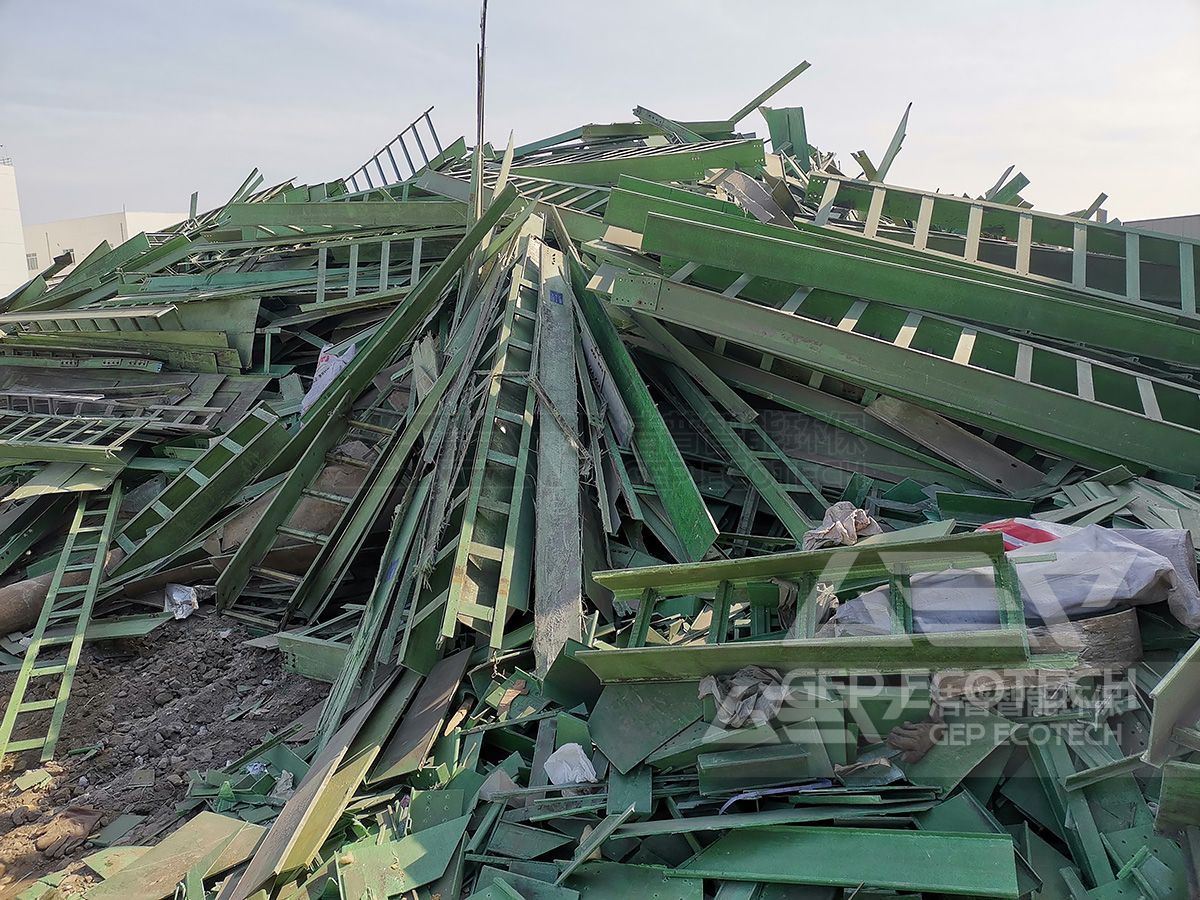
The following is the general process of recycling disposal of FRP:
1. Collection: Collect the waste FRP products, and classify and distinguish them.
2. Shredding: The collected FRP products are transported to the biaxial shear crusher through the feeding belt or metal chain plate machine for shredding, shredding into small pieces of FRP fragments.
3. Fine crushing: the shredded pieces of FRP are transported to the single-shaft fine crusher through the belt conveyor for further fine crushing and shredding into smaller pieces of FRP.
3. Separation and screening: the generated FRP fragments are separated and screened. For FRP fragments with more impurities, it is necessary to wash and screen them to reduce the content of impurities.
4. Melting molding: the glass steel fragments after screening are melted at high temperature and pressed into shape in the mold to form new glass steel products.
5, processing and use: the newly made FRP products for subsequent processing and treatment, such as coating, embossing, drilling, cutting, assembly, etc., to meet the needs of different uses.
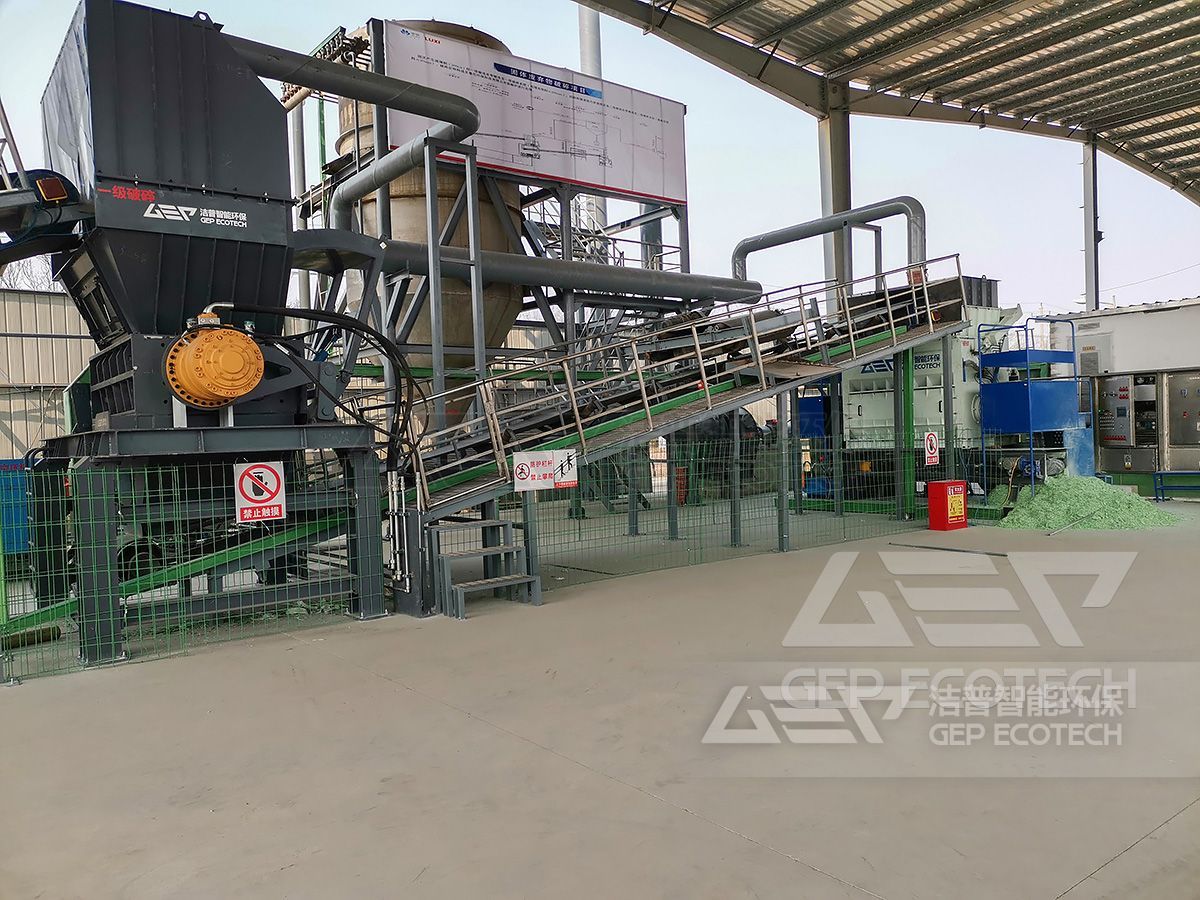
The above is the general disposal process of FRP recycling. In practice, it is necessary to formulate corresponding processes and schemes according to environmental regulations and technical requirements in different regions to ensure the effectiveness and safety of resource disposal.


